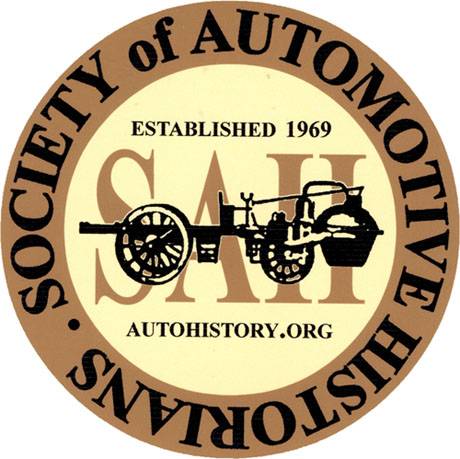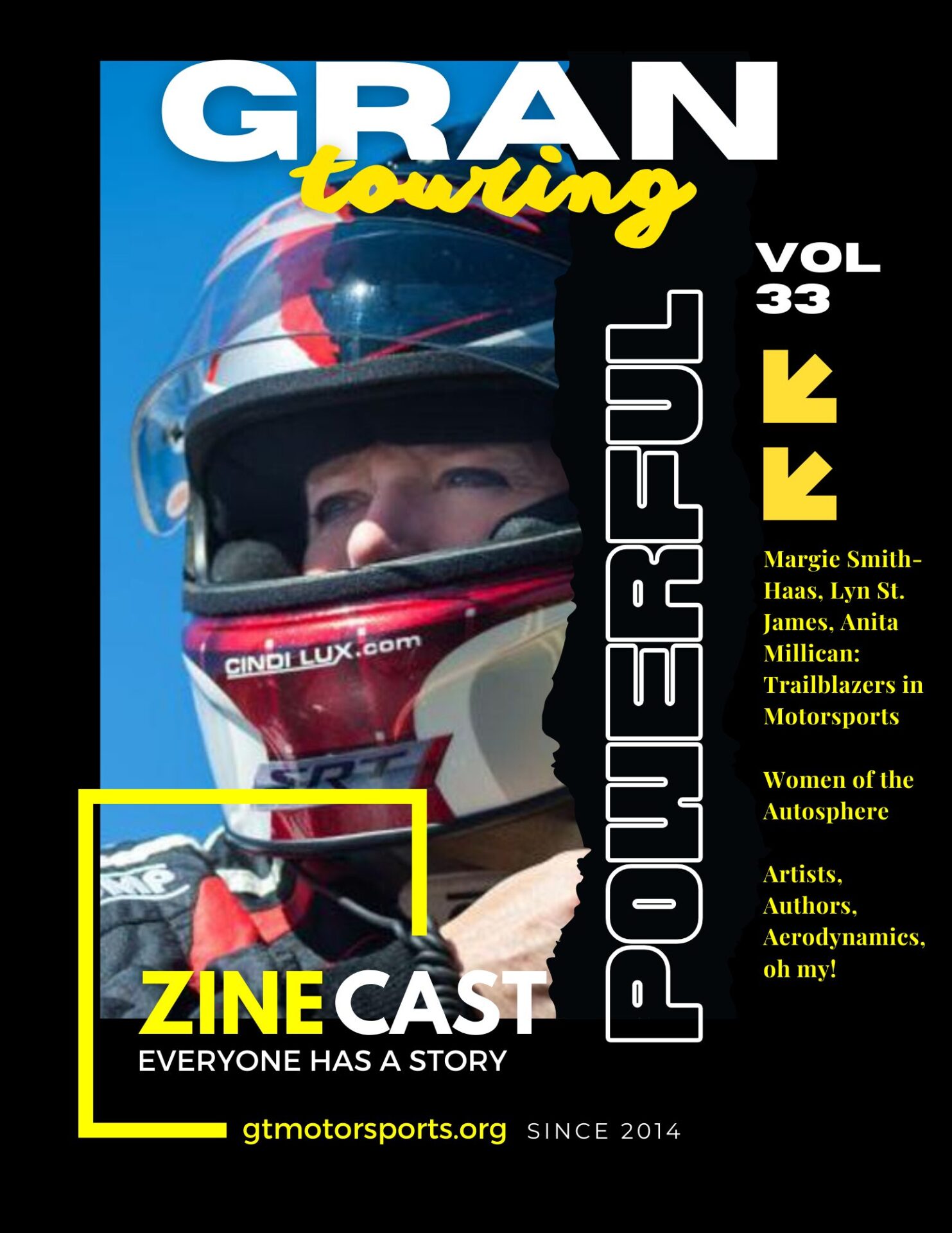Katharine Worth’s presentation will analyze the 1930s through the lens of Grand Prix racing – and the aspirations to race at that level – in Germany and Great Britain, addressing how motor racing became increasingly connected to politics and nationalism, showcasing the complex relationship between Germany and Britain at the time. Ms. Worth’s discussion will highlight the British and German perspectives and usages of motor racing in the 1930s as motor racing became entangled with the politics and rising tensions of the period. Speed became the marker of “civilization” in Europe – a power Germany possessed and one that Great Britain envied.
Tune in everywhere you stream, download or listen!
 |  |  |
- Bio
- Notes
- Transcript
- Highlights
- Livestream
- Learn More
Bio

Katharine Worth is a graduate student in History at the University of Western Australia. Following her Master’s research at the University of Edinburgh on the banal and natural involvement of politics historically in the Olympic Movement, Ms. Worth’s current research traces the relationship of politics and nationalism in Formula One (and it’s motor racing predecessors).
Notes
Transcript
[00:00:00] Break/Fix’s History of Motorsports series is brought to you in part by the International Motor Racing Research Center, as well as the Society of Automotive Historians, the Watkins Glen Area Chamber of Commerce, and the Argettsinger family. Politicizing Grand Prix Racing in the 1930s Germany and Great Britain by Krathen Wurth.
Catherine Wirth is a graduate student in history at the University of Western Australia. Following her master’s research at the University of Edinburgh on the banal and natural involvement of politics historically in the Olympic movement, Ms. Wirth’s current research traces the relationship of politics and nationalism in Formula One and its racing predecessors.
Her presentation will analyze the 1930s through the lens of Grand Prix racing and the aspirations to race at that level in Germany and Great Britain, addressing how motor racing became increasingly connected to politics and nationalism, showcasing the complex relationship between Germany and Britain at that time.
Ms. [00:01:00] Wirth’s discussion will highlight the British and German perspectives and usages of motor racing in the 1930s as motor racing became entangled with the politics and rising tensions of the period. Speed became the marker of quote, civilization in Europe, a power Germany possessed, and one that Great Britain envied.
Our next speaker is coming to us from Western Australia, Catherine Wirth. I’m Catherine Wirth. Firstly, thank you to the International Motor Racing Research Center for organizing this symposium and making it possible for me to present via Zoom today. I would like to begin today’s presentation with a quote from Professor A.
M. Lear’s article in the British Racing Driver Club’s magazine, Speed, in August of 1935. Speed is important, not for its own sake, because it is a very basis of civilization. This statement addresses key themes of the 1930s I would like to discuss and unpack. The correlation between speed and civilization and how nation states use speed is represented in Grand Prix racing to showcase fidelity and dominance.
in international [00:02:00] politics and sport, particularly from 1933 through to 1939. So how does Lowe define the relationship between civilization and speed? From Lowe’s perspective, civilization meant the spreading of knowledge and humane ideas across distances quickly. Speed was rapid transport, particularly that of cars, which would enable people and ideas to move.
Alternatively, arising out of this comment, my research will argue that a nation’s level of civilization rested on the ability to manufacture the world’s fastest cars. Speed was the possession of Grand Prix cars and civilization was victory in these events. As motor racing is a sport that compares speeds between nations, a nation’s level of technological civilization could be ranked.
The structure of the presentation will begin with analyzing politics and nationalism in motor racing occurring in Nazi Germany. The silver arrows of Mercedes Benz and Auto Union will be discussed, as well as the symbolism of the car for the regime. The hero narrative and legacy of Auto Union driver, Bernard Rosa, will also be considered.
Following from this, the focus will shift to Britain in the periods, a nation with [00:03:00] no car and no funding to race at Grand Prix level. This section six Explore Way Britain did not invest in motor racing considering members of the racing community saw speed as a marker for civilization. The final section follows the relationship between Britain and Germany in the late 1930s and motor racing.
The collision of angler general relations be showcased. The 1938 Donnington Grand Prix, the life of British Mercedes-Benz driver, Richard Seaman. And the calls for an English order. Em. The sources for this research primarily come from Britain and the British murdering press, and a few German sources are also included.
On the 11th of February, 1933, during the opening addresses for the International Automobile and Motorcycle Exhibition, Adolf Hitler stated his intentions to align the automobile industry with aviation, to reduce the tax burden of the automotive sector, create a highway system, and promote German automobile sporting events.
Occurring 12 days following Hitler’s appointment as Chancellor of Germany, this speech became a turning point in Germany’s commitment to automobilism and the rise of the Silver Arrows. The [00:04:00] seriousness of motor racing for the Nazi government can be seen through the centralization of racing under the National Socialist Motor Corps, or NSKK.
This enabled a controlled and unified racing team. This did also create militaristic ties to racing. One example is the paramilitary rank Hellbent Drivers. Furthermore, the Nazi government was involved with subsidizing Mercedes Benz and Auto Union from 1933 onwards. In a period following the Great Depression and war debt that Germany had, to provide any money to a racing team seems quite an expense to justify.
Other countries that also fund their teams, including fascist Italy, and reports include the French government sponsoring their teams in the later half of the 1930s. There are numerous factors, including commercial policies that can explain this expense, but for my research, I’m interested in the nationals aspect.
The drivers in the cars became symbols of modernity and success for a new Germany Hitler was creating. International competition created proof of Nazi superiority on the motoring front. The silver arrows and the racing team [00:05:00] through extensive propaganda were a vision of a modern Nazi Germany. However, this creates a problem due to the contradicting nature of Nazi ideology and modernity.
To put succinctly, Nazism was a political ideology in Germany during the 1930s, which proclaimed the superiority of the Aryan race. Associated with the Volkgemeinschaft, or people’s community, was the slogan Blut und Beutin, or blood and soil. This romanticized the idea of the peasant farmer and a return to the land.
This looking backwards ideology is contrasted though by the motorization policies and the modernity the cars represent in it. Careful reframing and stressing of the historical legacy of the car in Germany aided in bridging this discrepancy. Unfortunately, I cannot cover the full extent of this complex relationship in today’s presentation.
So the silver arrows were a key symbol of Nazi German pride, modernity, and nationalism. In the British motor magazine, Motorsport, they associated the victories of the Germans of racing cars. For Germany’s turn to motorization under Hitler, the Silver Allies became the pinnacle of the [00:06:00] German automotive industry.
The German racing teams, it was suggested by Motorsport, were run principally to raise the prestige and to demonstrate the power, efficiency and strength of Germany all over the world. In international sport, the setting enables one nation to compare itself against other nations. For motor sport, not only could they compare the sport craft of racing, but also the technology held by each nation.
This connection between the silver arrows, German identity, and victory was quickly established and propagandized to the German public. So the Nazi government, motorizing, provided a bounty of propaganda. The racing successes and its reflected glory, all of which were broadcast to the nation on state provided radios, screened in films, and printed in the news.
According to Neil Bazcombe, Adolf Hermann, the corpse Fuhrer for the NSKK, took every opportunity to herald the country’s dominance at the Grand Prix, as he believed racing is and always will be the highest embodiment of motorsport, and that’s the highest achievement of the nation in international competition.
One example of symbolism with silver arrows and Nazi German [00:07:00] nationalism is the presentation of the cars at the International Automobile and Motorcycle Exhibition. They are metallic emblems of progress which were encased in a pageantry to highlight German ingenuity and success. On the slide is an advertisement for the exhibition in Motorsport from February of 1935.
Behind the landscapes and landmarks of Berlin is one of the landscape record cars towering above the cityscape. The car is emerging from the capital, representing the new future emerging from the political center of Germany. As reported in the Times, these exhibitions are not international, but highlight the German first class craftsmanship and inventiveness.
On this slide is an image of the Mercedes Benz Grand Prix car at the 1935 International Automobile and Motorcycle Show, displayed in the Fall of Seine exhibition. The car is situated between two pillars, which on the walls are plaques detailing the successes of the car with the insignia of the NSPK.
Below the car is a laurel wreath, which is an ancient Greek symbol for triumph, and positioned above the car is the Imperial Eagle of Germany, with the swastika and its talons. [00:08:00] The foreground shows lights which are reminiscent of fireballs, and although not shown from this angle, there are guards surrounding the vehicle.
The staging, according to Julia Grossberger, generates a sense that the cars are meant to be viewed as objects of veneration, not for inspection. The light of the Holophane combines a museum with a hero’s shrine. The quasi spherical elements of the wreaths, imperial eagle lights, plaque, and honor guards provide the appearance that the cars are lying in state.
These cars are transformed into symbols of German greatness and superiority. So given this heroic staging of the cars, the drivers also had to match those qualities and be the right character to drive Germany to victory. The German racing drivers became part of a new socio cultural class, the sporting celebrity.
They were praised for their heroism and willingness to sacrifice oneself for the nation. A young driver school had been set up to foster German talent rather than force German teams to hire foreign drivers. This shows an aspiration of a national team in which the driver identity matches the identity of manufacturer.
However, as we [00:09:00] mentioned later with Richard Seaman, this cohesive national identity could be relegated as driver talent may have been more important. So of all the German drivers in this period, Chris Nixon comments, Bernard Rosemeyer was probably the most used driver by the Nazi government. However, why was Rosemeyer used for compared to other drivers?
What was the appeal of Rosemeyer for the Nazi regime? An explanation is the hero narrative that was easily constructed by Rosemeyer. He came from humble origins to the 1936 European Drivers Champion. He was a successful and talented racer, but at the same time suited the mould of what a German athlete and a German male should strive to be.
We know the phrase, heroes are created for when they are required, and for post WWI Germany and a new government, heroes were needed. For Nazi Germany, a hero needed to be physically fit, mentally strong, and successful. The horrors of the First World War saw men returning home with shell shock and war wounds.
Thus, Reisheim needed to represent a new Germany, one that was both [00:10:00] physically and mentally fit, withstand modernity, and the possible horrors associated with a modern to illogical war. The creation of male heroes like Rosemeyer were credited with the will and the resolve that gave him the ability to use his car as a weapon in battle.
Rosemeyer symbolized a new era for Germany. His victories in America and in Europe were seen as tangible proofs of a rise of a new, modern Germany. His death on the 28th of January, 1938, during a landslide record attempt, provided an important propaganda spectacle for the regime. A soldier doing his utmost to represent the honour and glory of Germany.
His death was treated like a period of mourning. Unlike most years, there was no procession of the cars through Berlin prior to the motor show in respect to Brozmaier’s death. His death was reframed in every aspect. It was not a full hearty speed test. Instead, as Fritz Tod, the director of the construction of the Autobahn status, he died as a soldier in the exercise of his duty.
According to a report in Motorsport, Hitler referred in his speech to the national loss sustained by the death of this great driver. Neil [00:11:00] Baskin Pilate’s Rosemart was even likened to Siegfried, the dragon slaying hero of German mythology. Even in death, Rosenstein’s fatal accident was transformed and mythicized into a hero and soldier narrative.
Now, in Britain, on the other hand, the racing community desired to have a car that could race against the silver arrows. They believed Britain should and needed to develop a racing team to uphold British nationalism abroad. The success of Napier in the pre war periods and in the victories of the Bentley boys in the 1920s reflected a historical precedent of British ability to produce winning cars.
Unfortunately, British manufacturers could not produce a car suitable to compete within the regulations for the 1930s. The amateurism of the Bentley Boys and the Napier Drivers could explain part of the setback. Amateurism was this belief in fair play and that sport should not involve material gain.
This, combined with the financial issues of becoming a driver, meant that racing in Britain was restricted to those who could afford it and had time to participate in it. This was completely different to Germany, where in Germany, the drivers were selected because of [00:12:00] talent and weren’t paid to drive. For the motoring press, the British government were responsible for Britain’s failings.
In motorsport, they believed there was an assured popularity to motor racing among the general public of Great Britain, but the opposition by the powers that be inhibited the ability for motor racing to become a national sport. The government had not provided funding for racing, nor has seen the House of Lords supported it.
While it is unlikely that there was an assured popularity to the sport in Britain, given its limited attention in the mainstream press, there does seem to be a lack of understanding in what motor racing could offer the nation. The British government, from the perspective of the press, Did not understand the prestige motor racing could offer Britain.
Following the 1938 Donington Grand Prix, it was reported in Speeds that it has apparently confirmed to many people that a successful Grand Prix racing team of cars and drivers can do much to enhance the prestige of any country and thereby influence that country internationally. So as has been discussed, nationalism and politics were becoming part of Grand Prix racing in the periods.
This section will now explore the [00:13:00] interaction between Germany and Britain in motor racing. Richard John Betty Seaman was a British driver who raced for the Mercedes Benz team from 1937 to 1939. Given the previous discussion on creating a driver academy in Germany, and they want to have German drivers racing German cars, it’s curious why the German team would agree to hire Seaman.
Whether it’s solely be his talent, it remains unknown. Seaman’s most successful moment was winning the 1938 German Grand Prix. This was the first time a British driver had won a continental Grand Prix since Manchester Henry Seagrave in 1923. Evidence of his British identity was seen through his English green helmet and radiatic ring.
Frequently stated by Simmons wife and friends was that he resisted the idea that politics was involved in motor racing, but as will be shown, this was impossible given the climate of the times. Tensions between Britain and Germany over Czechoslovakia, also known as the Munich crisis in 1938, led to the postponement of the 1938 Donington Grand Prix, which was meant to be held on the 1st of October.
This event produced a situation in which drivers [00:14:00] had to acknowledge the involvement of politics in sport. Both the Mercedes Benz and Auto Union teams had stayed until the very last possible chance. On reflection in Motorsport, the correspondent called Auslander States. The Munich crisis of September last year showed us how the German racing teams were determined to carry on to the very last moments, for they only departed from Donington when war was really imminent.
The Munich Crisis highlights the driver’s opinions on motor racing and the beliefs of remaining apolitical in sports. However, there was a mounting sense that motor racing could not, as they believed, remain apolitical or even continue to occur. During Seaman’s speech to the Royal Automobile Club in London, prior to the Donington Grand Prix, he stated that he is frequently asked why he races German car.
Aside from love of sport, he states, Motor racing knows no frontiers, and it would be a calamity if the political situation interfered with that. This was at a cheers from both the German and British racing drivers. Unfortunately, politics often naturally becomes involved in sport, regardless of athlete desires.
On March 15, [00:15:00] 1939, German troops crossed the Czechoslovak border and occupied Prague. The mounting political tensions in Germany made Simon realize that sport was incapable of being kept separate from politics. As recounted by Mr Neubauer, the team manager for Mercedes Benz, Simon was finding it difficult as an Englishman to carry on working for a German firm.
Seaman recalled the previous motor show in which, at Hitler’s request, the teams had to parade the racing cars at the Reich Chancellery and shake the hand of the Führer. For Seaman, he could hear Stuart Field Hitler’s words about the fearless racing drivers who risked their lives not just for the love of the sport, but for the honor of Germany.
As politics of the 20th Cyprule from sport, Seaman consulted Lord Howe, the president of the British Racing Drivers Club, who himself conferred with several people in government, parliament, and business. Lord Howe’s response was that any personal contact with Germany was valuable, and she maintained.
Eventually, with the Anglo French Guarantee of Poland, and the German repudiation of the Anglo German Naval Agreement, Simon wrote to Lord Howe, As I now hear that Anglo German and [00:16:00] Franco German sporting events are either forbidden or frowned upon by the authorities, I am naturally wondering if the time has not come when I ought to give up driving for Mercedes.
Given the tone of the letters, Simon understood the typical situation. In the final letter from Seaman, there was a sense of disillusionment and not wanting to do Hitler’s racing bidding anymore. Unfortunately, we’ll never know if Seaman was prepared to leave the team as he died at the 1939 Belgium Grand Prix.
He might not need to give up his Grand Prix dreams if there was an English alternion. Reported in a biography written by fellow racer and friend, Prince Choula Jacopon, Simon was driving a German car for the joys of handling the finest racing machines, exiting, and also to add to his own personal glory as he waited in vain for a British Grand Prix challenger.
The British racing community wanted a car to match the Silver Arrows. They saw Germain taking the sport seriously and seeing its value for national prestige. For example, this article at Motorsport on the slide asks for an English Auto Ian. It calls for a [00:17:00] coordinated effort of British manufacturers to follow in Auto Ian’s footsteps and unite under one team.
Prestige in comparison to other nations, especially in fields related to technology, would show superiority. When reported from speed states, perhaps if it was seen that in would losing her laurels in the records fields, it would wake us up to the fact that in these days we cannot afford to ignore any form of achievement upon Rich rests some sort of prestige.
These calls on a British motor racing community highlight the failures of British racing industry, a performance performances order. Him also spoke to the magazine, the Murder between November, 1938 and January of 1939 regarding British bro pre racing prostates. In the letter titled The Opinion of Mr.
Werner, the Director of Auto Union, on the question of building British racing cars dealt with in the magazine The Motor, he regrets that Britain has not been represented at a Grand Prix, for constructing racing cars is, as Werner considers, the foremost of his national duties. At one point he states, in the racing sport, not [00:18:00] only the chivalrous combat between man and man is decisive, but of equal importance are his helpers and his tool, the racing car, back of which must stand the intellectual and physical efficiency of the nation.
This could possibly link back to the discussion on Rosemeyer needing to physically and mentally fit the challenges of modernity. Given that Germany did have a successful racing team, were they challenging Britain’s efficiency in a motorized conflict? This communication between Order Union and the British press does raise the question of motive.
For the British press, they might have been seeking advice on the premier racing teams in the hopes of eventually racing against them and maybe beating. But the benefits from Order Union seem unclear. Another assumption can be that having a British racing team, it would be another team for Germany to beat.
After years of civil arid dominance, other nations were unable to keep up. Having another team to assert dominance over would add to the prestige and national pride in Germany. While politics did interfere with the running of the Grand Prix, the drivers and teams saw a policy of no politics in sport.
This [00:19:00] aspiration seems hypocritical, especially from the Silver Arrows, who from the past years had been involved in Hitler’s motorization plans and propaganda. It does raise the question of choice though, did the Silver Arrows want to be involved in politics and the nationalistic propaganda of the regime, or merely race cars for the joys of racing?
Motor racing did not occur in a vacuum, independent of the social, political, or cultural changes occurring in the 1930s. Rather, it was reshaped and influenced by the climate of the times. It was not only the sport itself, but the fans, racing community, and drivers, which also adapted to the shifting nature of the sport.
As the perceptual civilization rested on speeds, motor racing in the 1930s became entangled with politics and the rising tensions of the periods. And that concludes our presentation for today. I just wanted to thank once again, the International Motor Racing Research Center and for organizing symposium, making it possible for me to present also to Silverstone Interactive Museum and Archives, their research and archives, and obviously to my professor.
David Barry, and for further information [00:20:00] or for references or questions, please feel free to contact me. Thank you, Katie. A very nice analysis interpretation. Would your analysis interpretation shifted if you had looked at it more on the comparing with the French or the Italians rather than Great Britain?
I think the Italians were quite similar to Nazi Germany. I think it might’ve been more, the British and French might’ve experienced something quite similar. My research doesn’t extend to those nations just because of language difficulties. And I thought it’s quite interesting, especially with Germany and Britain before the second world war, with just the rise of like different industries.
Ideally, it’d be fantastic to have a look at all of the countries and seeing how they kind of interact with each other. Between France and Italy, there was some events where the French did ban the Italians from racing, which I think was a bit more than what happened between Germany and Britain. Was Richard Seaman a spy?
Maybe. I we can’t find his personal face. It’d be a pretty cool story. [00:21:00] I do know that there was, for example, British motorcyclists who were part of the war office racing in Germany up until the start of the second world war. I guess they’re kind of more spy ish. This is the thing with these sources is that we never know the full extent of his background and everything.
An interesting presentation about the pre war British versus Germany. I wonder what you’d comment about the post war BRM fiasco compared to the resurgence of Mercedes after the war. Was that a parallel kind of situation? I mean, I haven’t really looked in the post war period at the moment. This is just one chapter in my PhD thesis.
I mean, it’d be an interesting thing to look at. So it’s something different to look into. Obviously, German identity changed post war with the divide between East and West. So that kind of taken a bit of a, and different political opinions. I don’t really know, but I’m happy to look into it because it does sound quite fascinating.
I actually was doing a lot of research on French Grand Prix driving in the interwar period. So [00:22:00] I’m so excited to hear more about the German perspective. In your research, were you finding that Auto Union and Mercedes were the high ups real believers in the NSKK and Nazi ideology or were they kind of doing it because they wanted the money that Hitler had on the table?
Do you have any sense of what their feeling was about that? I think it was a bit of both. From the sources that I read, the money really wasn’t that much compared to what they needed. I did a lot more looking at Auto Union rather than Mercedes, because the RFT books are Mercedes written. So I did look a lot, I went to the Auto Union archives and stuff in Germany.
I think there is a belief in it and I think it’s more accommodating to the regime. They do offer like their workers time to go to like the rallies and things like that. And I do think they do see it as nationalistic, and I don’t know if it’s nationalistic in related to narcissism or nationalistic as related to pride in Germany and sort of the rise of German motor racing, especially with like the invention of the car, like showing that’s progression.
You’d never [00:23:00] know if they’re fully supported the Nazi regime, or they’re just kind of doing it. There are certain drivers, and I think a lot of them were more just playing the system, just trying to make the most of it. Especially, I get that feeling with Hans Stucke a bit. I think he’s kind of just playing the political power to kind of get what he wants.
I mean, Richard Seaman really wasn’t that supportive of Nazism. He was more just, I’m here to race. Yeah, you can never really know, but I do think it’s more pride and nationalism in Germany rather than supporting fully the Nazi regime. And I think it would be those in the NSKK that were more like supportive of Nazism and seeing that.
That’s probably the best way I could explain it, but it is definitely something quite interesting to explore. Very nice presentation. Could it be said that the British pursued aircraft development through the Schneider Cup and the Supermarine Company, which led to the development of the Spitfire, which might even have been more significant than what the Germans were doing?
I think that is a possibility. I think there might have just been, yeah, looking [00:24:00] elsewhere. Rather than focusing on motor racing, you look at like the automobile industry in Britain. It’s still kind of increasing in that period. It’s just developing those technologies. I don’t know how the British government were kind of dealing with post Great Depression, preparing for a future war.
They just didn’t have the time to develop a racing car and defend landscape record, but they wanted to focus on more, more preparation, more about the people of Britain rather than a sport, which is fair enough. I think they just had other things to, which are a high priority to maintain in that society rather than build a fast car.
So, fabulous work. It stimulates way too many questions, but I’ll restrain myself to one. Bring your analytical focus to the present day. We suspect that Formula One would say it’s a transnational enterprise now. And yet, of course, drivers are identified by their nationalities. We hear the national anthems, you know, but on the third hand, of course, these are corporations are all globe spanning, not necessarily [00:25:00] identified by the nation state.
So, a simple question would be, What is the place of nationalism in Formula One racing today? That is the entirety of my thesis. I’m looking at nationalism is a part of Formula One. And even with this globalization and transnational guys, the very heart of any kind of sport or anything in society, we do have an attachment to the nation and we do attach nationalism to it.
And so my research, my PhD thesis does start, so I’m actually starting pre First World War, and I go up to the present day, is the goal with different case studies. So even the recent case studies, yeah, we’ve got this massive sort of traveling circus of Formula One going to these different countries and different cities.
But there is nationalism. Like you look at the Tifosi, you look at the people who support Saffron’s fans from that side. You look at the British Grand Prix. There is nationalism. And I mean, even if we’re just flagging it with the national anthem or the flags or the colors. It is still nationalism getting printed.
And I [00:26:00] always get reminded of Michael Billy’s Spanish Nationalism and this idea of like the flag. Even if it’s just silently in the building, it is still reminding us that we belong to a nation. And we know that that’s a nation, we know that we’ve got our own nation. So I do think Formula One is nationalistic and it tries to tender to Islam and it will always be involved in nationalism and politics, it’s the nature of sport and Formula One.
That’s my goal for my research for my PhD. So it’s a few more chapters to go till we get to that point in time. It’s fascinating. Anyone else? Okay. Thank you very much, Katie. Thank you so much. Thank you. And we look forward to hearing from you, uh, in the future, the symposium or your writings. Please keep in touch with us and we’ll keep in touch with you.
Yeah, definitely. Please feel free to contact me with any email. Hearing you talk and watching you. I’ve gotten two emails from members at home asking how to contact you. So. Yeah. Happy to discuss anything related to motor racing and national. All right. They’re both racing guys. All right. Thanks again, Katie.
You [00:27:00] take care. Bye. This episode is brought to you in part by the International Motor Racing Research Center. Its charter is to collect, share, and preserve the history of motorsports, spanning continents, eras, and race series. The Center’s collection embodies the speed, drama, and camaraderie of amateur and professional motor racing throughout the world.
The Center welcomes serious researchers and casual fans alike to share stories of race drivers, race series, and race cars captured on their shelves and walls and brought to life through a regular calendar of public lectures and special events. To learn more about the Center, visit www. racingarchives.
org. This episode is also brought to you by the Society of Automotive Historians. They encourage research into any aspect of automotive history. The SAH actively supports the compilation and preservation of papers. Organizational records, print ephemera and images to safeguard, as well as to broaden and deepen the understanding of motorized, wheeled land transportation through the modern age and into the future.
For more [00:28:00] information about the SAH, visit www. autohistory. org.
We hope you enjoyed another awesome episode of Brake Fix Podcast brought to you by Gran Touring Motorsports. If you’d like to be a guest on the show or get involved, be sure to follow us on all social media platforms at GrandTouringMotorsports. And if you’d like to learn more about the content of this episode, be sure to check out the follow on article at GTMotorsports.
org. We remain a commercial free and no annual fees organization through our sponsors, but also through the generous support of our fans, families, and friends through Patreon. For as little as 2. 50 a month, you can get access to more behind the scenes action, additional Pit Stop minisodes, and other VIP goodies, as well as keeping our team of creators Fed on their strict diet of fig Newtons, gummy bears, and monster.
So consider signing up for Patreon today at [00:29:00] www. patreon. com forward slash GT motorsports, and remember without you, none of this would be possible.
Highlights
Skip ahead if you must… Here’s the highlights from this episode you might be most interested in and their corresponding time stamps.
- 00:00 Introduction and Acknowledgements
- 01:18 Speaker Introduction: Katherine Worth
- 01:31 The Role of Speed in Civilization
- 02:39 Nazi Germany’s Motorsport Ambitions
- 11:11 British Motorsport in the 1930s
- 13:02 Richard Seaman: A British Driver in Germany
- 14:58 The Intersection of Politics and Motorsport
- 20:03 Q&A Session
- 27:00 Closing Remarks and Sponsor Messages
Livestream
Learn More
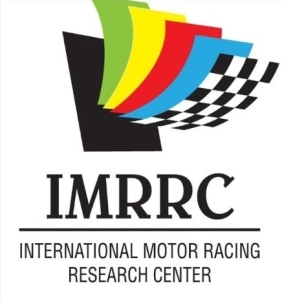 If you enjoyed this History of Motorsports Series episode, please go to Apple Podcasts and leave us a review. That would help us beat the algorithms and help spread the enthusiasm to others. Subscribe to Break/Fix using your favorite Podcast App:
If you enjoyed this History of Motorsports Series episode, please go to Apple Podcasts and leave us a review. That would help us beat the algorithms and help spread the enthusiasm to others. Subscribe to Break/Fix using your favorite Podcast App: |  |  |
Consider becoming a Patreon VIP and get behind the scenes content and schwag from the Motoring Podcast Network
Do you like what you've seen, heard and read? - Don't forget, GTM is fueled by volunteers and remains a no-annual-fee organization, but we still need help to pay to keep the lights on... For as little as $2.50/month you can help us keep the momentum going so we can continue to record, write, edit and broadcast your favorite content. Support GTM today! or make a One Time Donation.
This episode is sponsored in part by: The International Motor Racing Research Center (IMRRC), The Society of Automotive Historians (SAH), The Watkins Glen Area Chamber of Commerce, and the Argetsinger Family – and was recorded in front of a live studio audience.
Other episodes you might enjoy
Michael R. Argetsinger Symposium on International Motor Racing History
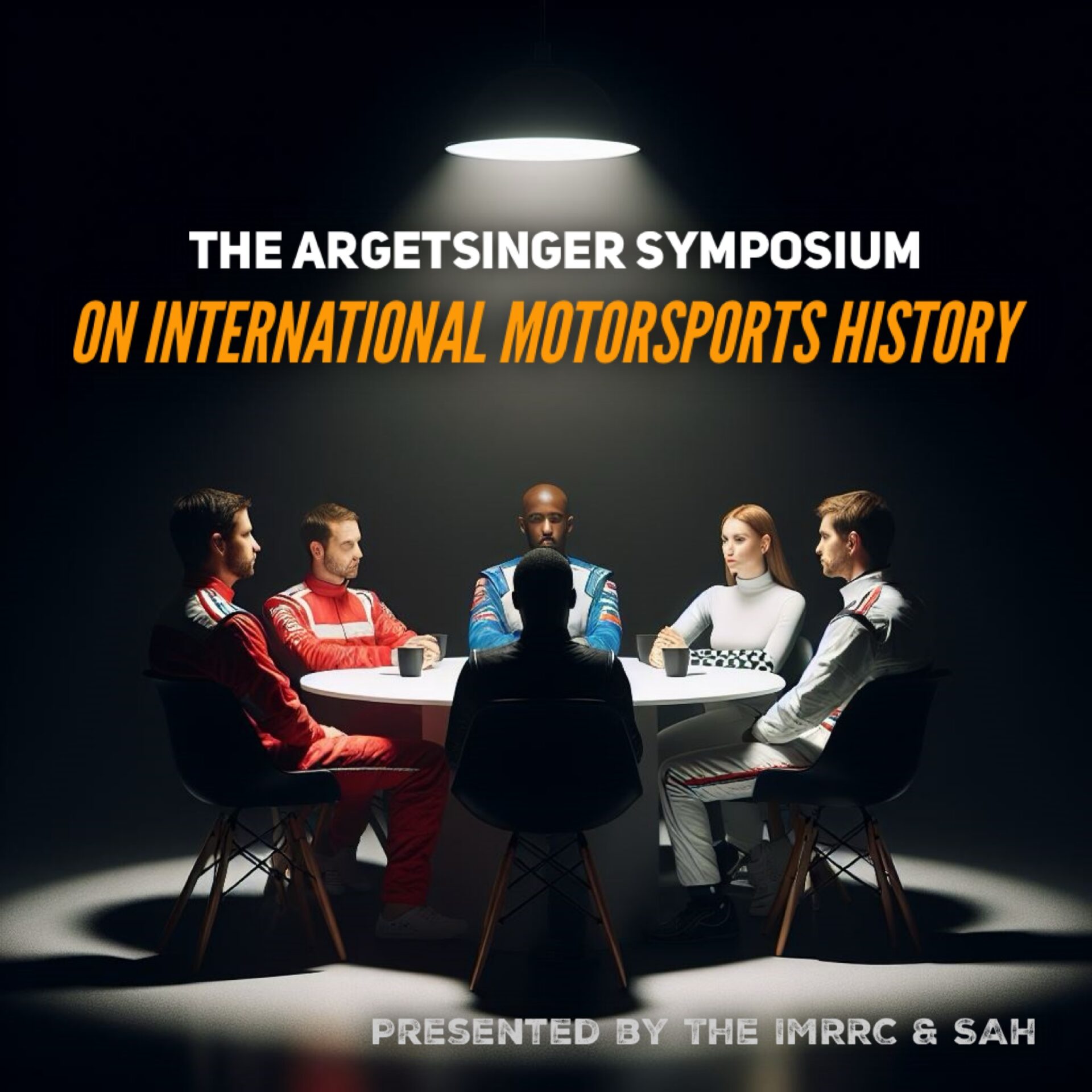 The International Motor Racing Research Center (IMRRC), partnering with the Society of Automotive Historians (SAH), presents the annual Michael R. Argetsinger Symposium on International Motor Racing History. The Symposium established itself as a unique and respected scholarly forum and has gained a growing audience of students and enthusiasts. It provides an opportunity for scholars, researchers and writers to present their work related to the history of automotive competition and the cultural impact of motor racing. Papers are presented by faculty members, graduate students and independent researchers.The history of international automotive competition falls within several realms, all of which are welcomed as topics for presentations, including, but not limited to: sports history, cultural studies, public history, political history, the history of technology, sports geography and gender studies, as well as archival studies.
The International Motor Racing Research Center (IMRRC), partnering with the Society of Automotive Historians (SAH), presents the annual Michael R. Argetsinger Symposium on International Motor Racing History. The Symposium established itself as a unique and respected scholarly forum and has gained a growing audience of students and enthusiasts. It provides an opportunity for scholars, researchers and writers to present their work related to the history of automotive competition and the cultural impact of motor racing. Papers are presented by faculty members, graduate students and independent researchers.The history of international automotive competition falls within several realms, all of which are welcomed as topics for presentations, including, but not limited to: sports history, cultural studies, public history, political history, the history of technology, sports geography and gender studies, as well as archival studies.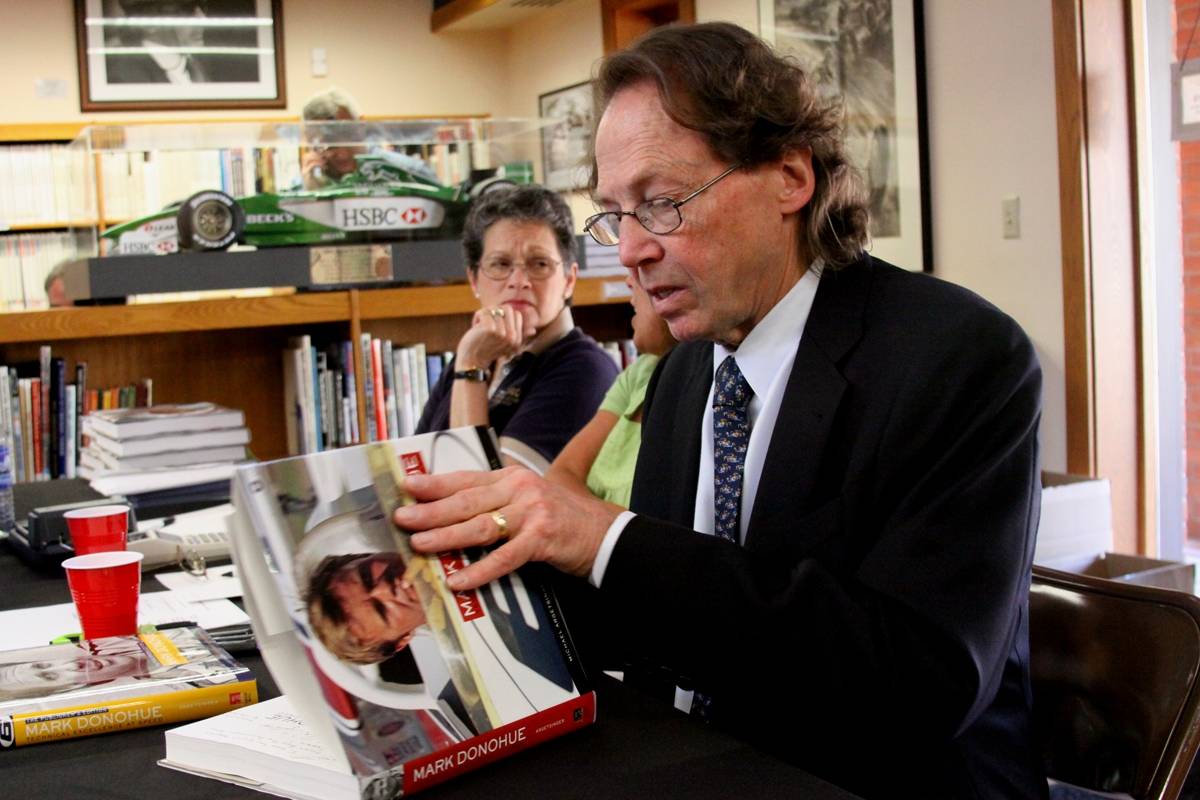 The symposium is named in honor of Michael R. Argetsinger (1944-2015), an award-winning motorsports author and longtime member of the Center's Governing Council. Michael's work on motorsports includes:
The symposium is named in honor of Michael R. Argetsinger (1944-2015), an award-winning motorsports author and longtime member of the Center's Governing Council. Michael's work on motorsports includes:- Walt Hansgen: His Life and the History of Post-war American Road Racing (2006)
- Mark Donohue: Technical Excellence at Speed (2009)
- Formula One at Watkins Glen: 20 Years of the United States Grand Prix, 1961-1980 (2011)
- An American Racer: Bobby Marshman and the Indianapolis 500 (2019)
























